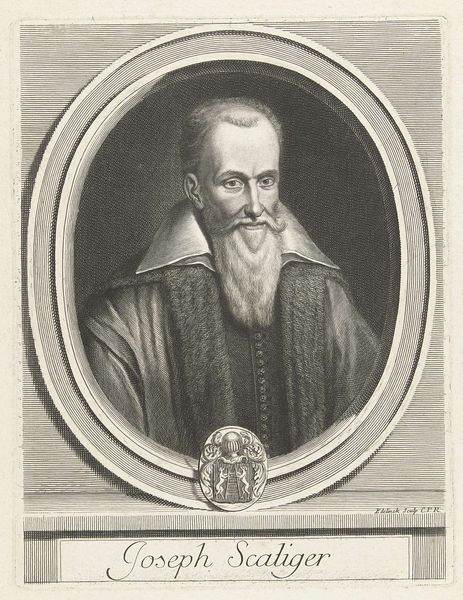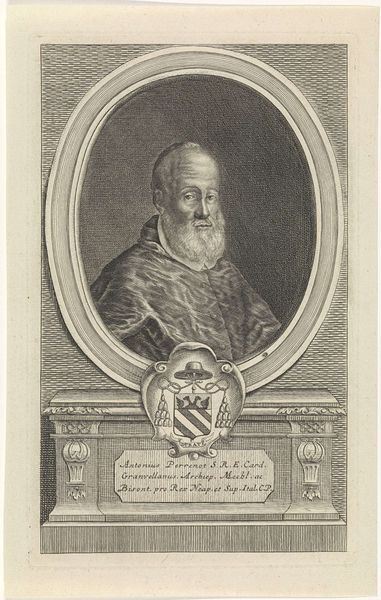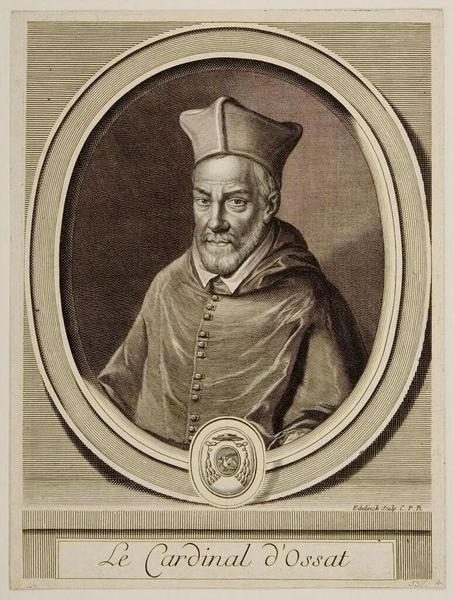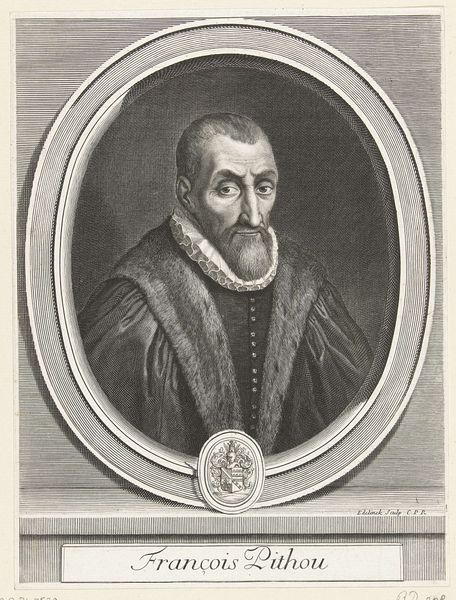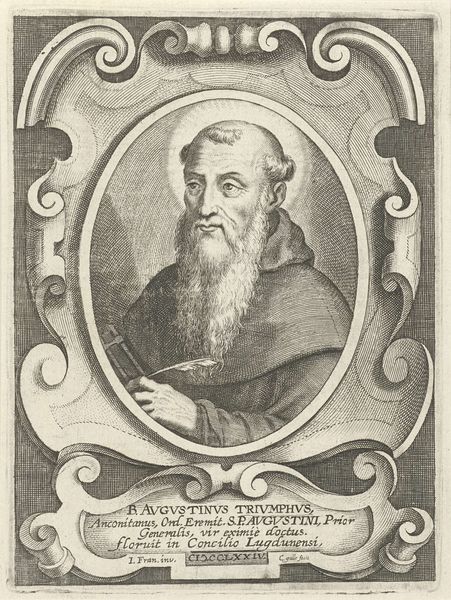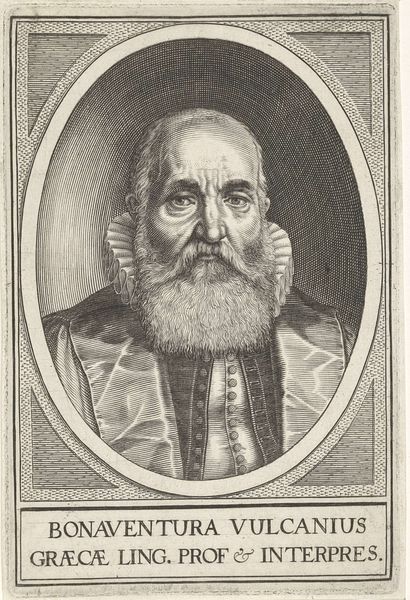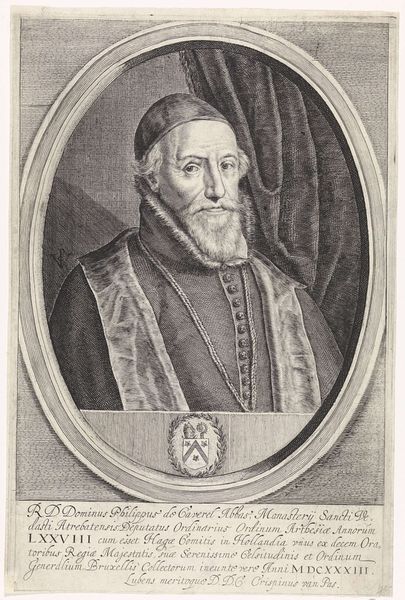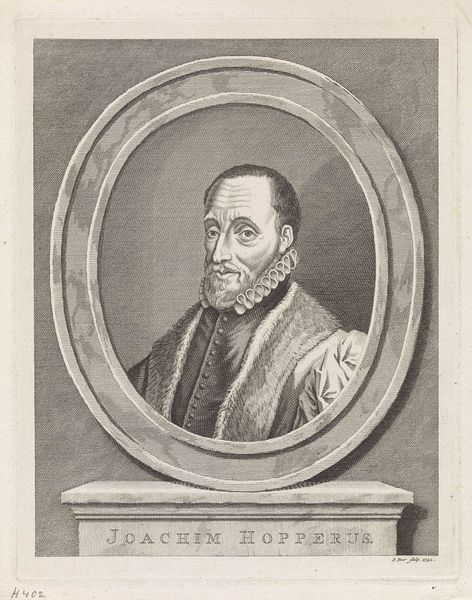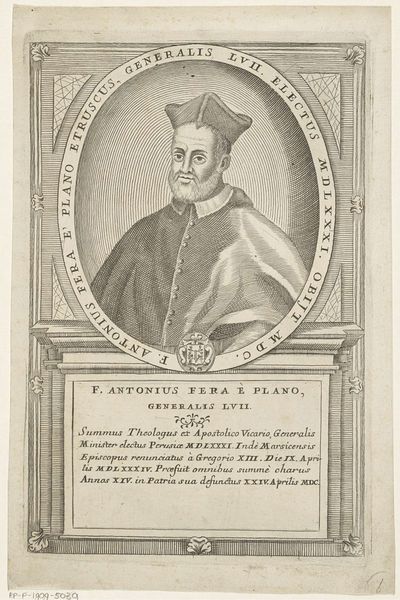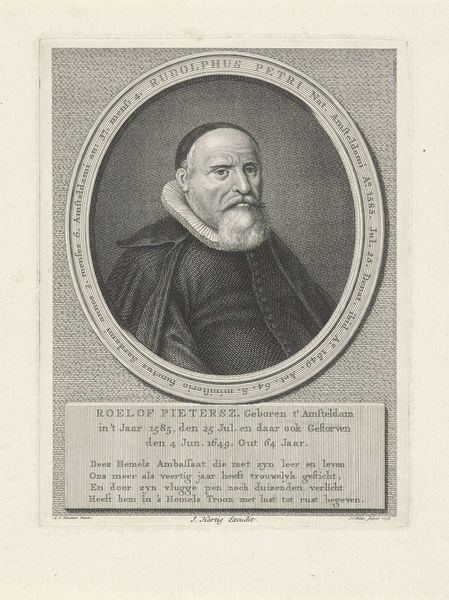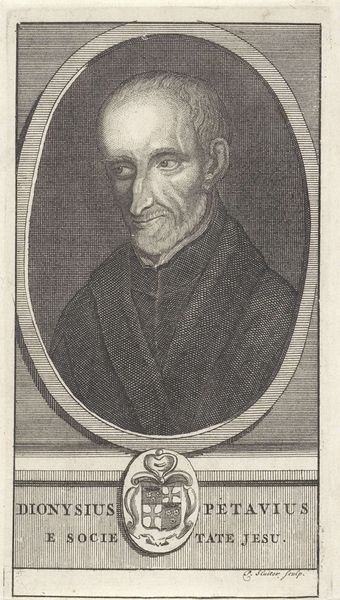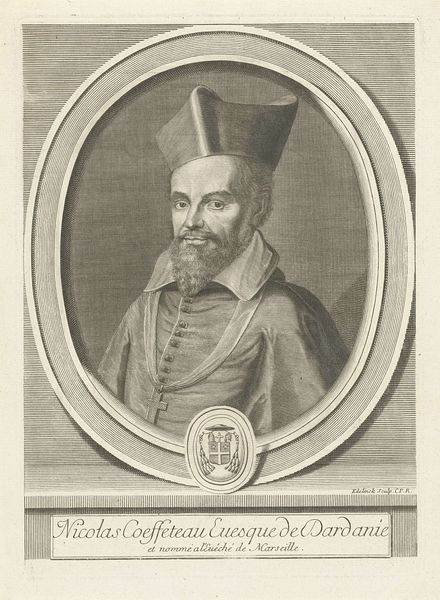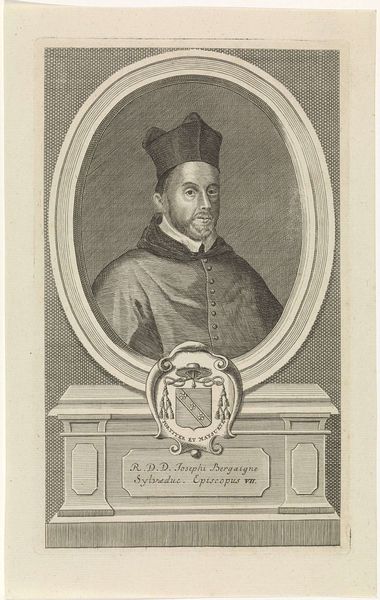
Portret van Anthonie Perrenot, kardinaal van Granvelle 1840 - 1884
0:00
0:00
johannwilhelmikaiser
Rijksmuseum
print, engraving
#
portrait
# print
#
portrait reference
#
pencil drawing
#
academic-art
#
engraving
Dimensions: height 213 mm, width 139 mm
Copyright: Rijks Museum: Open Domain
Curator: Here we have a fascinating print created sometime between 1840 and 1884 by Johann Wilhelm Kaiser. It depicts Anthonie Perrenot, Cardinal Granvelle, a significant figure in his time. Editor: My initial impression is one of formality and power. The stern expression, the ornate garments—it’s clear this is a man accustomed to authority. There’s an almost severe weight to the image. Curator: Indeed. Consider the choice of rendering Granvelle. Notice how Kaiser uses precise engraving techniques to emphasize both status and religious authority. The meticulous details in the coat of arms also underscores Granvelle’s high position. The artist uses symbolic elements. Editor: The engraving itself suggests a deliberate decision to convey seriousness. Prints like these often served a political purpose, didn’t they? How was this particular image likely used, socially or politically? Curator: Precisely! Print portraits allowed wider circulation of influential figures' images, especially to audiences excluded from oil paintings. This would contribute to crafting a carefully controlled public persona. The choice of print as the medium would indicate distribution of authority. Editor: The circular frame creates an aura around him, set against the neutral backdrop; the oval motif of the artwork is broken by a bold coat of arms which feels unusual in this sort of work. What symbolism lies here? Curator: Good point. While ovals evoke nobility, heraldic shields cemented ancestral lineage. It grounds the symbolic power through real ancestry, further illustrating social elevation over time. Editor: It's fascinating how a seemingly straightforward portrait can reveal such layers of societal meaning and individual ambition, captured within these engraved lines. Curator: Absolutely. Visual culture often dictates how history remembers prominent persons through their lasting symbolic presence, not solely achievements. Editor: This artwork provides a great reminder to consider how the production and consumption of imagery affect social and political life. Curator: And by deconstructing such symbolism, we gain insights into power dynamics shaping those moments in history.
Comments
No comments
Be the first to comment and join the conversation on the ultimate creative platform.
